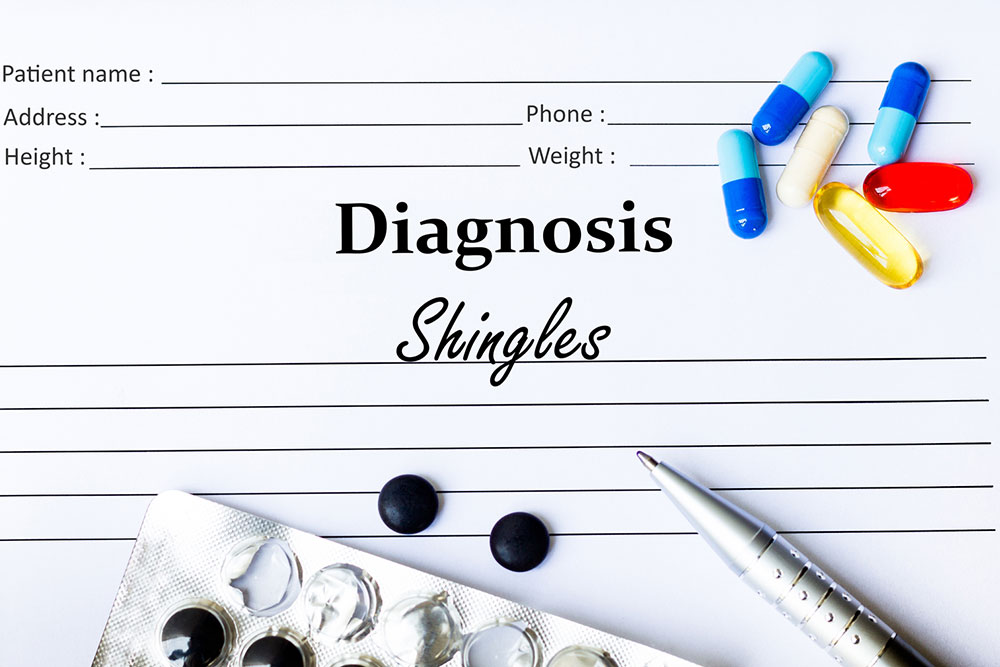Shingles – Symptoms, Risk Factors, and Treatments
Shingles is an infection caused by a virus. It is characterized by a painful rash. The same virus that causes chickenpox leads to this viral infection. It results in the development of a stripe of blisters, usually on one side of the body. This rash is very painful, and usually, patients need to adopt some remedies to get relief from shingles.
Symptoms and diagnosis of shingles
Shingles is characterized by pain and a burning sensation.

Your doctor may diagnose shingles through its tell-tale symptoms and signs. When you have red blisters that tend to sting, itch and burn, you probably have shingles. These signs alone help your doctor in the diagnosis of this problem. It is essential to get the right diagnosis to find the right remedies and treatments for shingles.
Risk factors
The varicella-zoster virus which causes chickenpox is responsible for shingles as well. If you have had chickenpox at any point of time in your life, you face the risk of developing this condition. Once this virus enters your system, it stays dormant for a long time. It may get activated by exposure to infections when your immunity levels are low.
Though shingles itself is not contagious, the varicella-zoster virus is communicable. Exposure to open sores of other shingles patients can put you at the risk of developing this infection.
You are at high risk of developing shingles after you turn 50. Some diseases like HIV, AIDS, as well as cancer, can put you at risk of developing this problem. These diseases lead to low immunity levels, which can raise your chances of getting shingles. Even exposure to radiation and chemotherapy treatments put you at risk of having shingles. Excess use of certain steroids can expose you to the risk of developing shingles.
If the blisters associated with shingles are not treated, it can lead to skin infections. In some cases, shingles can lead to postherpetic neuralgia where the pain associated with the blisters continues even after the blisters have healed. Shingles can also lead to nerve damage, resulting in complications like facial paralysis, and hearing problems. It can also lead to hearing issues. Shingles around the eyes can be very harmful and may end up causing a loss of vision.
Remedies and treatment options for shingles
Various treatments and remedies are available that can help in controlling the symptoms of shingles. However, some vaccines can aid in preventing shingles in the first place. Chickenpox vaccine or VARIVAX® is a part of the typical childhood immunization process. It helps deal with the symptoms of shingles and keeps a check on the complications associated with it. Other vaccine options are ZOSTAVAX and SHINGRIX.
The treatment process for shingles essentially involves prescription medicines like aciclovir and valaciclovir. These medications are helpful in giving relief and limiting the risk of developing any complications.
One can treat severe pain that accompanies shingles with the help of topical medicines. You can opt for capsaicin patches or numbing agents like lidocaine. To deal with the pain associated with this problem, you can ask your doctor for injections with local anesthetics and corticosteroids. Anticonvulsants and tricyclic antidepressants may also help in dealing with the pain.
Remedies for shingles tend to include healing baths and cool compresses. Using cold water is highly recommended while bathing. Adding cornstarch or oatmeal into lukewarm water for bathing can work well for you if you have shingles. Cold compress involves the application of cold, wet cloth on the blisters and rashes. For the best remedy for shingles, you need to create a mixture of water and baking soda or cornstarch. Applying this mixture on the affected areas for about 10-15 minutes can provide relief from the symptoms of shingles.
The remedies for shingles also involve bringing about changes to your diet as well as lifestyle. Since a low immunity level tends to worsen the problems associated with shingles, changes in your diet can help in dealing with this problem. It is advisable to consume meals that are rich in vitamin A, B, and C. A diet consisting of red meat, chicken, eggs, dairy, whole grains, tomatoes, legumes, and spinach is excellent for improving your immunity levels. You should strictly restrain from consuming foods that have high amounts of sugar in them, or those with refined carbohydrates or a high content of saturated fats. By avoiding these, you can keep shingles and its associated complications at bay.